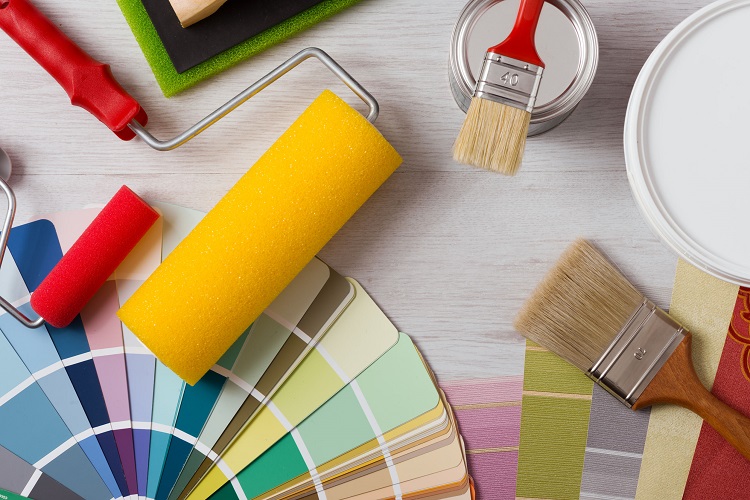5 Ways to Avoid Common Wall Painting Mistakes

Not Preparing the Walls Prior To Painting
A common mistake that anyone can overlook – let’s just paint over the walls and it will look perfect. Wrong! You need to fully prepare a wall prior to painting to really bring out the best in it. Go over the surface with sandpaper to sand down the previous paint – especially important if your walls are covered in oil-based paint and you want to paint with latex. Here is a useful tips on how you should choose and use sandpaper.
Ensure the walls are smooth before applying any kind of paint as well as making sure that any holes you have filled in with poly filler have dried and been sanded down smooth.
Not Having Enough Paint

One common mistake is to get carried away with the colour and realise that you do not have enough paint to coat all of the walls. This is especially painful if you return to the store to realise they have none of your paint colour left in stock. The professional painters have a way of calculating how much paint you will need is to measure the perimeter of the room, multiply by the ceiling height and then subtract the surface area of your doors and windows.
The quick way to ensure you purchase enough paint for your room is to know that a standard 5 litre bucket of paint will cover roughly 400 sq. ft or 37 sq. metres. This is enough for a single coat of paint on an average sized room of 10ft x 15ft (3m x 4.5m)
Having the Wrong Type of Paint
Spending your entire weekend painting your spare room, kitchen or living area can be completely wasted if the paint doesn’t stick. Having the right kind of paint will help you avoid all of the common mistakes that people make when choosing paint. Oil-based, latex-based or other varieties are made for specific surfaces and have different finishes. First you have to determine the texture of your walls, after that choose the colour that sits well on it.
Latex based paint is extremely durable and resistant to all types of problems, such as moisture. Scuffs and scratches on the surface are kept to a minimum with latex paint, and is highly washable. Oil-based paint however provides a smoother finish, can hide wall imperfections as well as being easy to wash and is the choice of professional painters.
Using the Wrong Tools to Paint With

You’ve got your paint, your overalls, and your protective equipment for the furniture and a bunch of old brushes you found in the attic. Don’t make the mistake of buying expensive paint and then using old brushes and rollers to put it on the walls. Not only will the surface be terrible, you will have wasted your weekend’s work!
Invest in a decent set of paint brushes and rollers that can be easily found at your local hardware or DIY store. Decent brushes can last a lifetime, so ensure that you thoroughly wash and scrub your brushes and rollers after use to extend their life.
Putting a Second Coat On too Soon
Many people understand the need to apply a second coat of paint to their wall surfaces, but choosing the right time to do so will help you with the overall finish. If you apply a second coat of paint before it is dry, you can completely ruin a paint finish which can end up costing you a fortune to repair.
Ensure that you have waited a good 6 hours before you paint over the first coat – sometimes this takes even longer when using oil-based paint, and you will have a perfectly painted wall that will last.
Before you do any painting work, ensure you have all of the right equipment to do so. Prepare the walls, remove any marks or divots with poly filler and sand them down properly. Apply an undercoat to the wall with decent brushes or rollers, and ensure you give it time to dry. Apply a second coat if needs be and enjoy your newly painted wall!

